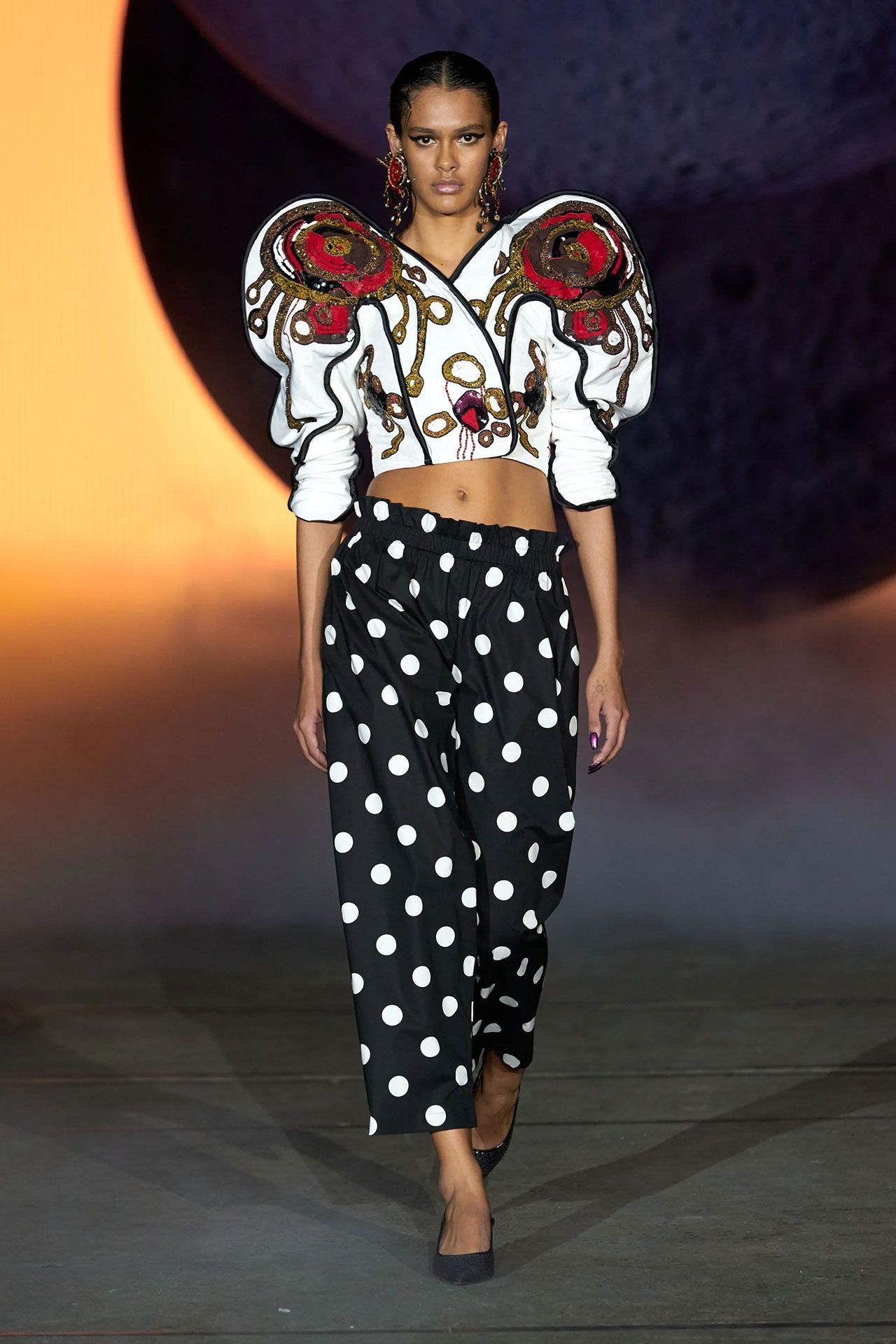Courtney Zheng, who is an AFW newcomer, agrees. “There’s a clear shift this year towards a greater focus on design integrity,” she says. “When the garments are conceptually and technically strong, they hold their own and there’s no need for excessive theatrics. For us, AFW remains the most significant event on the calendar — it’s a moment where designers, creatives and stakeholders come together to celebrate our shared commitment to Australian fashion.”
The blueprint
At the end of 2024, the AFC conducted an industry survey to establish what designers want most from a revamped fashion week. The overwhelming consensus? For it to go back to a “business-generating” fashion week. “The industry felt the event had started to lean further into fashion entertainment, a consumer-focused event, not a sales event dedicated to generating new wholesale accounts domestically and internationally,” Hush says.
Australia’s fashion and textile sector currently contributes AU $28 billion to the economy, exports over AU $7.2 billion annually (more than wine and beer combined) and employs 500,000 people (more than mining and utilities combined). Women make up 77 per cent of the workforce. Hush is confident that, with targeted support like that of AFW, the sector can grow to AU $38 billion over the next decade. “An industry-focused AFW is a very important part of this projected growth,” she says.
This is the first time in AFW’s 30-year history that the event has been not-for-profit. Whereas past iterations veered towards a focus on making money — not always with designers’ best interests at heart — this year’s event is squarely focused on platforming Australian talent. “The schedule this year features brands that are ready to wholesale as we want buyers to be at a show and know that they can invest in what they are seeing — which wasn’t always the case in the past,” Hush says.
To get more brands on board, with the help of Robyn Catinella, founder and managing director of PR firm Catinella, organisers put together a group show titled The Frontiers, featuring Amy Lawrance, Courtney Zheng, Common Hours, Esse, Matin, Wynn Hamlyn and Paris Georgia — all brands Catinella believes have scope to sell internationally. Because it’s a group show, costs including production and models are covered by AFW, lowering the barrier to entry for designers who otherwise might not have shown this week.
Read More
Who is Australian Fashion Week for?
AFW is an essential launch pad for emerging designers — but showing on-schedule is expensive. Many are deciding whether to stay or go abroad.

“Group shows have traditionally struggled with perceptions of being overly commercial or lacking refinement or commercial viability,” Catinella acknowledges. “We saw an opportunity to shift that narrative and not only offset the high costs of showing at fashion week, but present a curated, elevated experience that celebrates individuality over uniformity.” She’s confident that it will be a win for AFW’s renewed focus on wholesale and international exposure. “Commercially, the model’s efficiency is compelling: presenting the region’s leading talent in a single, well-considered setting captures the attention of time-poor international buyers and press,” she says.


